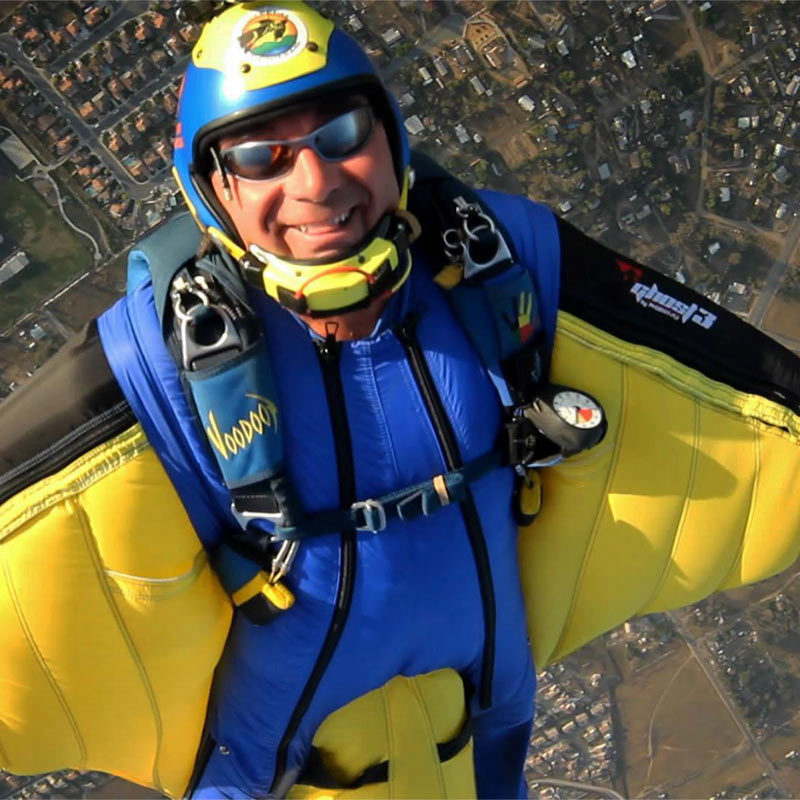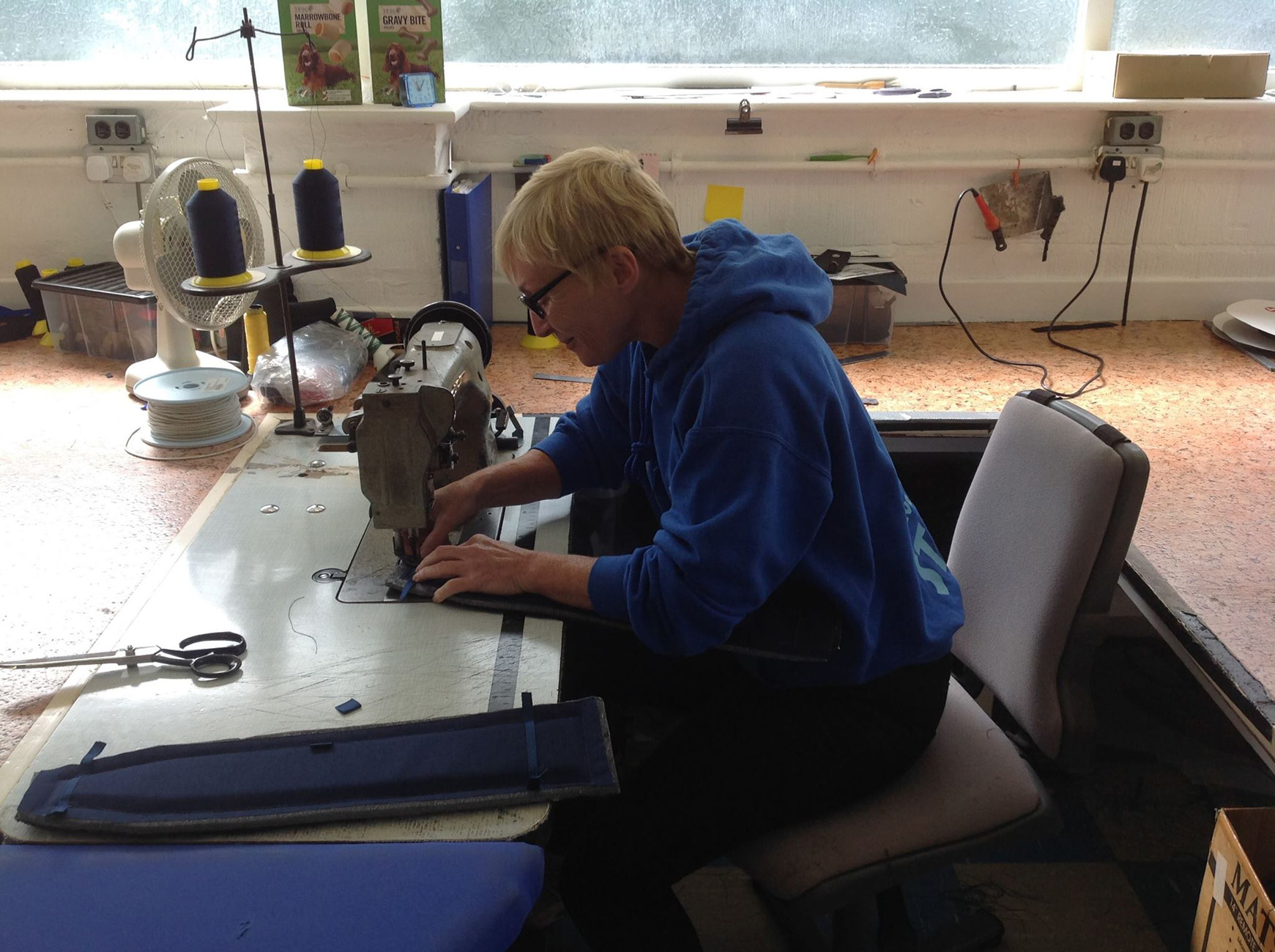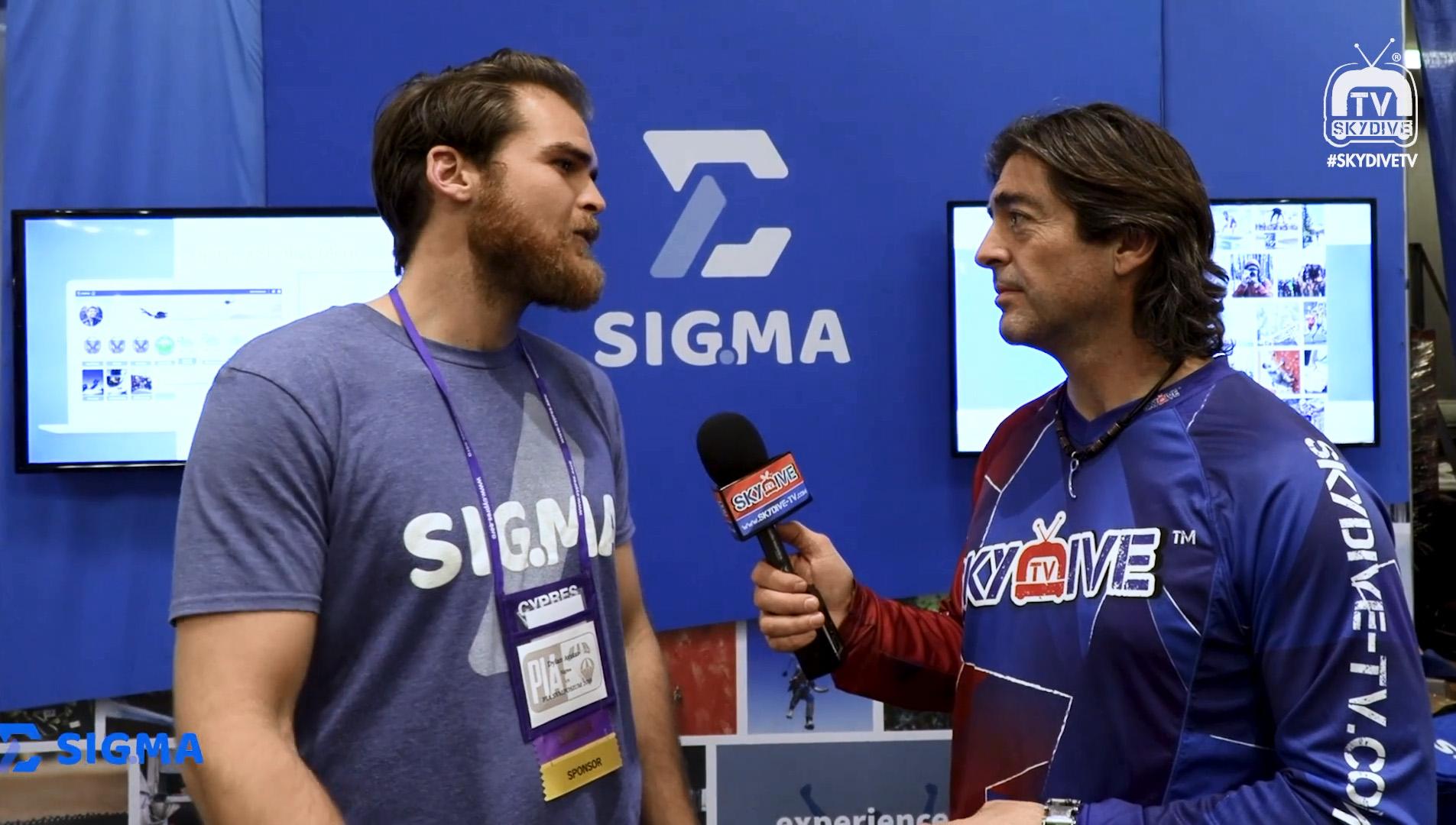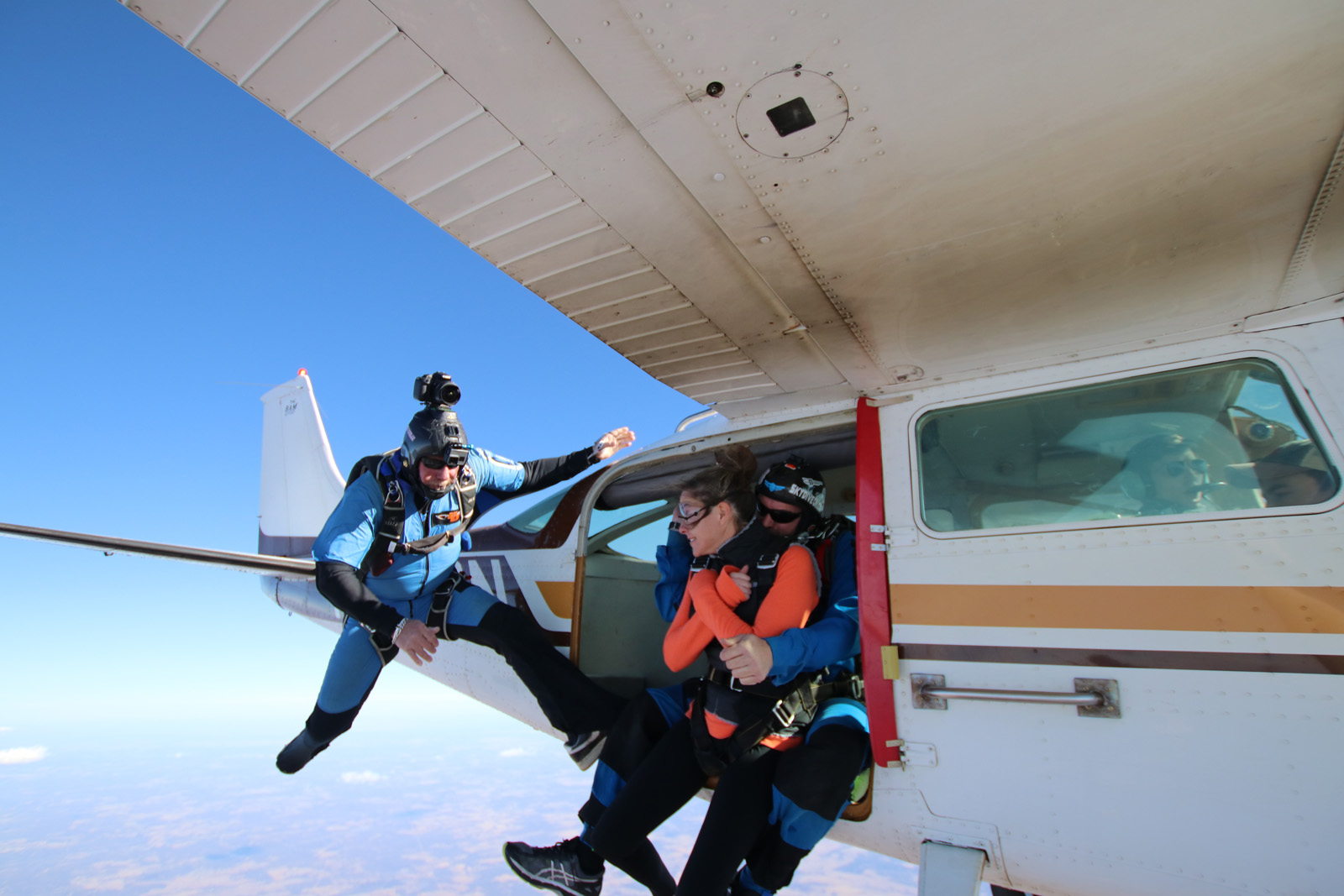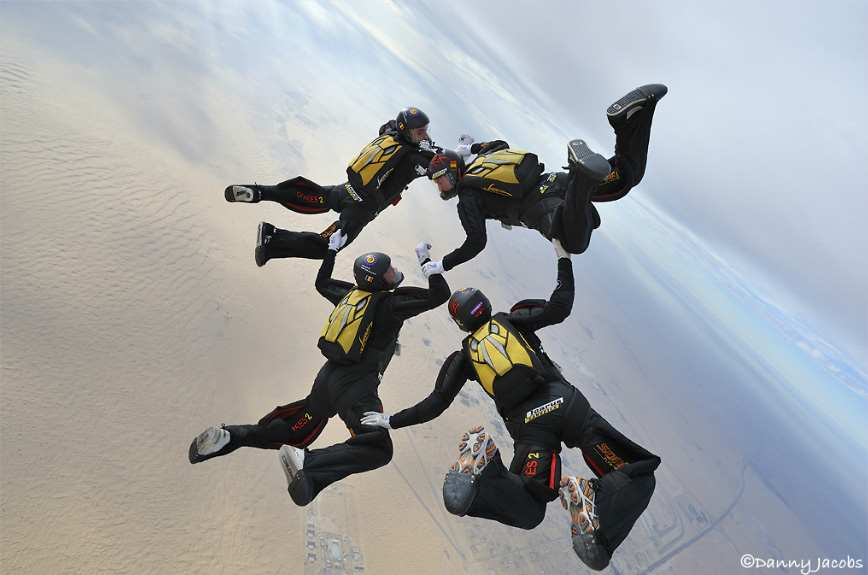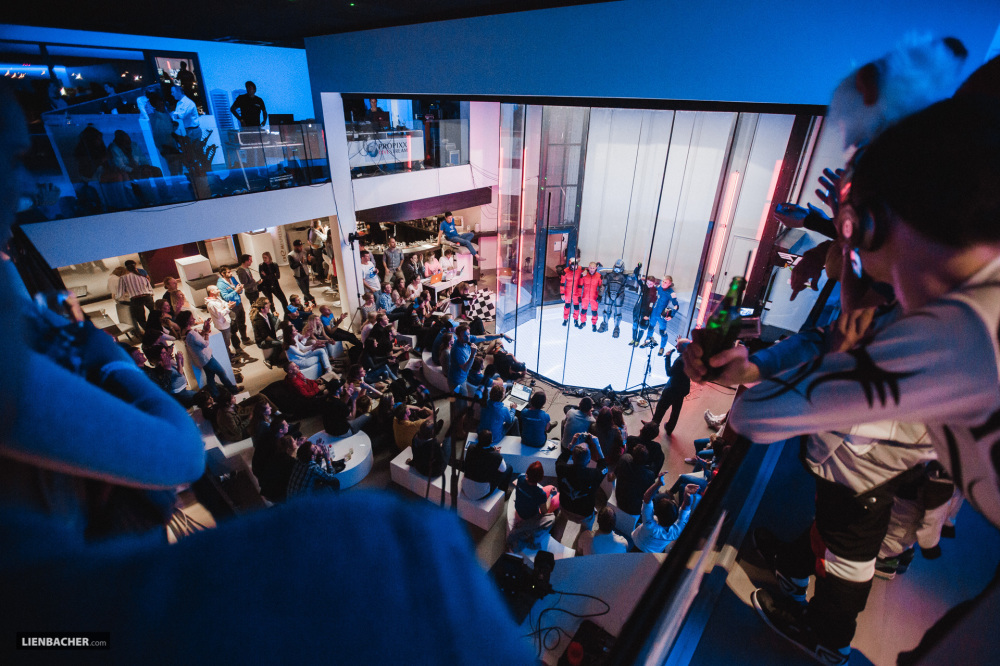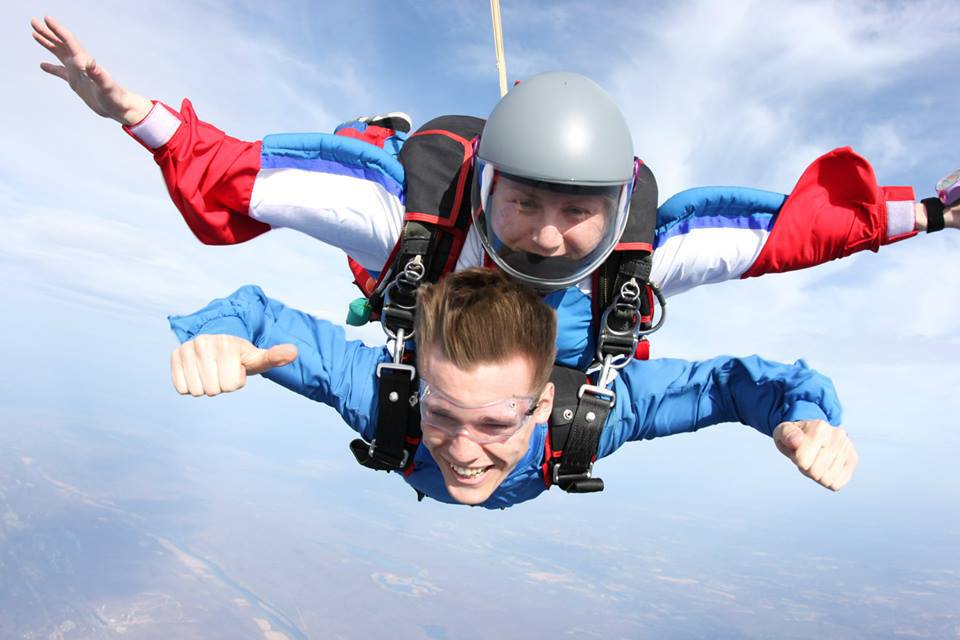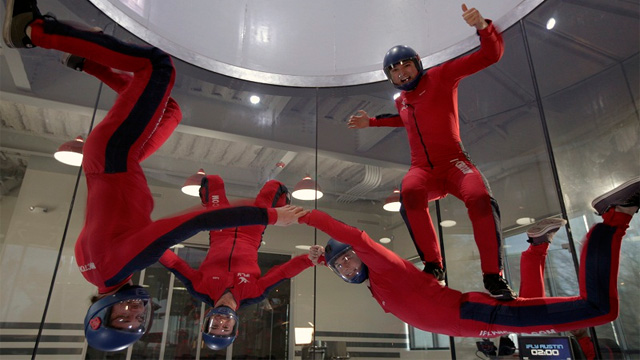Leaderboard
-
in Articles
- All areas
- Adverts
- Advert Questions
- Advert Reviews
- Videos
- Video Comments
- Blog Entries
- Blog Comments
- Images
- Image Comments
- Image Reviews
- Albums
- Album Comments
- Album Reviews
- Files
- File Comments
- File Reviews
- Dropzones
- Dropzone Comments
- Dropzone Reviews
- Gear
- Gear Comments
- Gear Reviews
- Articles
- Article Comments
- Article Reviews
- Fatalities
- Fatality Comments
- Fatality Reviews
- Stolen items
- Stolen item Comments
- Stolen item Reviews
- Records
- Record Comments
- Record Reviews
- Help Files
- Help File Comments
- Help File Reviews
- Events
- Event Comments
- Event Reviews
- Posts
- Status Updates
- Status Replies
-
Custom Date
-
All time
January 20 2016 - June 4 2024
-
Year
June 4 2023 - June 4 2024
-
Month
May 4 2024 - June 4 2024
-
Week
May 28 2024 - June 4 2024
-
Today
June 4 2024
-
Custom Date
03/29/2019
-
All time
Popular Content
Showing content with the highest reputation since 01/20/2016 in Articles
-
2 pointsDo your suspension lines have a noticeable five-o'clock shadow? Maybe it’s time for your gear to spend the weekend with your friendly neighborhood rigger. If you’re unsure, you’re not alone--plenty of skydivers hem and haw about this particularly important aspect of canopy maintenance. Looking for a little more convincing? Here’s a brief education on line maintenance by Karen Saunders, one of the few (and one of only two women) to hold the lofty Advanced Rigger ticket from the British Parachute Association. Karen has seen enough fuzzy line sets to give any sane canopy pilot the night sweats, and she wants to make sure it’s not you that gets to live the nightmare of a mid-swoop snap. 1. Go with your gut. “Trust your instincts. If you think that maybe your lines are looking a bit shabby, they probably are. Most people will look at their line set and say, That looks a bit shit, but I’ll do something about it tomorrow. Tomorrow turns into a week, and then a month. Before you know it, you’ll have a line snap or an off-heading opening. Fix it before you create yourself some problems.” 2. Know what you’ve got. “The most important thing is to know what type of line is on your parachute. Most people don’t--and if they don’t, then they won’t know how many jumps they can expect to get out of that line set before it needs to be replaced. And they also won’t know whether to expect to have line shrinkage or whether it is going to go the other way and simply snap when it reaches the end of its life cycle. Vectron and HMA will do just that if you don’t take care of them: Snap. They won’t give you a warning aside from the fact that they will start to fray as they age. The other thing to think about is where your line set actually comes from. Most people will buy their line sets from manufacturers, but there are riggers out there that will make cheaper line sets themselves. I can spot a manufactured line set from anything else in a flash, but most people couldn’t--and maybe that’s the line set have got on your canopy that you bought from somebody in good faith. It is always best before you buy anything to get it checked out.” 3. Get some visual reference. “Once you know what line type is on your parachute, look at Performance Designs’ line wear charts for your lines to get an idea of what wear actually looks like. It may surprise you. Using that reference as an example, you can see how deterioration looks over a given period of time and what percentage of strength you lose. You can test your new knowledge immediately by looking at the bottom part of your brake lines and the stabilizers. Those lines are always going to take the brunt of the wear. Generally, having the bottom part of your brake lines replaced at the first sign of wear is going to save you a whole world of problems.” 4. Watch for the warnings (if you have a line type that broadcasts them). “If your lines are made of Spectra or Dacron and you need a reline, you can expect to get some bad openings: an off-heading or big surges after opening. That’s generally because the slider is moving up and down your lines, heating them up and shrinking them. If your parachute opens and it is not on-heading, then it is generally an indication that it is going out of trim. You need to get somebody to look at that. When you do, they might look at it and tell you that the lines are okay; maybe it’s just your body position causing the problem. If they look at your lines and go holy shit, man, you need to replace straight away, then you have your answer. Either way, you’ll have peace of mind.” 5. Don’t get tunnel vision. “Don’t just look at your lines. Your lines are suspended by some binding tape which needs checking as well. Especially after a hard opening, be sure to look at the tape where each line is attached to your canopy, as well as the fabric around it. Kill lines are another thing. Everybody forgets that a kill line wears out in the same way as a suspension line, except a lot more quickly. If your kill line is made out of Spectra and has shortened, then you’re going to start having problems with your openings. The dead giveaway is finding that your pilot chute is turned virtually inside out every time you land. A kill line wears throughout the bridle. The weakest point doesn’t have to be at the bottom or top--it can snap right in the middle--so make sure you pull it through from both ends when you check it. Pull it as far as you can from one end and then pull it as far as you can from the other end to have a good look. Finally: If you’re getting a new line set, please, please, please replace your slinks as well. Don’t put a new line set on it and put an old set of slinks on it. That defeats the object of this exercise. They are not infallible. They do fail, and the last thing you want is for a slink to fail at 200 feet, because you’re not going to survive that.” 6. Remember: The integrity of your lineset isn’t a good place to save a few bucks. “The costs to reline aren’t as bad as you might think. I can tell you roughly what I charge, but I can’t speak for other riggers. That said, I will always look at something for free, and if someone asks me for it, I will always give my advice for free, and that’s also the way most of the riggers I know like to work. I charge 15 pounds, which equates to about 20 U.S. dollars, to replace both lower brake lines. If the lowers go from the cascade all the way to the toggle, I charge 40 pounds--which is something like $60. If you compare that amount of money to losing a brake line when you’re flaring--or when you are at 100 feet--you see the value. You have to weigh the cost of your own safety. If you don’t happen to have a rigger on your dropzone, then go to an experienced jumper. See them and say, Hey, I’m a bit worried about this. What do you think I should do? If they look at it and start laughing, you have your answer.”
-
1 pointNot wearing earplugs on every skydive? Hear me out (while you still can): It’s pretty damn important to add a pair to your every-jump kit, and your excuses probably don’t hold up to expert scrutiny. What expert? A lofty one. Last week, I got to talk to Dr. Anna Hicks* at length about the thorny matter of skydiving with a cold (watch the February issue of Parachutist for that one). At one point, our conversation took a slight diversion towards hearing damage. The content of that more than deserves its own moment in the sun: Our delicate soundholes, and the damage we don’t have to do them. So: Why aren’t you wearing earplugs on every jump? 1. Because it’s not that big a deal. If you like listening to things other than phantom roaring, then sorry. It kinda is. Each of us is born with 15,000 sound-sensing cells per ear. (I like to think of ‘em as magical hearing hair, because that’s kinda what they look like.) Hearing loss occurs when they die. It’s not just noise exposure that kills them; certain medications and other environmental factors and do it, too, but those are freak deaths by comparison. Once they’re gone, they’re gone. Birds, fish, and amphibians have the ability to grow back magical hearing hair. Mammals, like your average skydiver, lack the ability to regenerate these cells. All we can do is stick in a hearing aid and hope for the best. You don’t have to take my word for it. Talk to anybody who suffers from tinnitus and ask them if they’d have taken precautions to prevent it. 2. Because I don’t jump that much. Dr. Hicks begs to differ. “I see so many skydivers that have damaged their hearing,” she notes. “Even if you’re just doing 100 jumps a year, every time you jump, the engine is noisy, and the freefall is noisy, too. Over your skydiving career, that adds up to a lot of noise exposure.” “I still find some people that can’t be bothered with ear plugs even in the wind tunnel,” she adds, “but our hearing is too important not to take ten seconds to put them in every time. You don’t want to end up not able to hear your friend at the pub because you knackered your hearing from too much noise exposure.”** 3. Wearing earplugs in freefall is dangerous. If it’s not just laziness that’s keeping you from protecting your hearing, it might be a misplaced sense of safety. Dr. Hicks wears hers from ground to ground, and she recommends that you do too, even if it’s just on the way up to altitude. “I am a big advocate with any patient I see,” she says, “especially those whose job is skydiving, to wear ear plugs at least on the way up and ideally on the way down as well. Earplugs do not prevent situational awareness, stop you from being able to talk to your students, or to hear shouts under canopy. You can hear what you need to hear, usually you can actually hear your audible altimeter better because the background freefall crackle is reduced, and vitally, [wearing earplugs] reduces the longer-term damage we can experience from our sport.” Some people discover that they find a problem equalizing if they have earplugs in on the way down. Dr. Hicks’ advice: If equalizing is a problem for you, try using the vented plugs (which you can buy from a pharmacy for a few dollars) to better equalize during descent. 4. I can’t afford the nice ones and the foam ones cause ear infections. According to Dr. Hicks, that is not a thing. As long as the plugs are rated, they’ll provide the protection you need. “You can wear posh ear plugs or the cheap foam ones like you get in the tunnel,” she says. “Either-or.” According to a study of sixty long-range patrol-aircraft crew members, the idea that disposable foam earplugs cause ear infections is a total myth. The crew members were randomly divided into three groups: one wearing fancy custom-molded earplugs, the second using foam earplugs that they washed after each use, and the third group using foam earplugs washed only once per week. The study lasted eight weeks and included examinations by a medical officer as well as skin scrapings for bacterial culture and fungal examinations. The results indicated no fungal infections or clinically significant bacterial infections, and no differences in positive bacterial culture between the groups. Moral of the story: roll ‘em up and stick ‘em in. They’re going to prevent a heck of a lot more damage than they could possibly cause, and 50-year-old you (who doesn’t have to have the TV on FULL BLAST ALL THE TIME) will thank you. *Dr. Hicks is a certified badass. An active-duty Aviation Medicine specialist in the British Regular Army, she has logged more than 4,000 jumps over 15 years in the sport, many of which as the Outside Center for the multi-medaled British 4-way team NFTO. Dr. Hicks is also a British Parachute Association Accelerated Freefall Instructor and formation skydiving coach, as well as a Skydiving Instructor at Britain’s legendary Skydive Netheravon. Oh: and she was Tom Cruise’s personal aviation doc during the filming of the latest Mission: Impossible reboot. ‘Nuff said. **Confused? Ask a British person for a translation.
-
1 pointWritten by Laura Jane Burgess There’s excited chatter on the mat, the rustle of nylon fabric being packed, the buzzing hustle and bustle of a busy day. Canopies zip overhead. Squinting, mesmerized, though you’ve seen it near a hundred times, you watch the initial glide across the grass, the slide of flat-soled swoopers, and the quick-legged staccato steps as each jumper comes to a stop. You’ve never seen a more perfect day to skydive. Waiver signed you file in line behind a queue of shuffling feet and exasperated sighs—a 15-person traffic jam. Daylight’s burning. Loads should be turning. What’s the holdup? It’s the fellow at the front. A jumper far from his home drop zone (558.9 miles, ± .1 mile to be exact). His innocent intent was to check in and manifest. Except, he doesn’t have so much as a shred of physical documentation to his name. No logbook to verify currency and no physical, tangible evidence of USPA credentials. What’s to be done? His lack of documentation dismissed or ignored? Certainly not. Exhaustive, time-consuming attempts made to secure a paper trail. Undoubtedly. If everyone’s lucky, the ordeal will take 10-20 minutes. However, if you consider that at a busy drop zone you’re likely to encounter the same issue any number of times on any given day. The wasted daylight adds up, cutting into profit margins and the amount of time jumpers spend in the air. Imagine for a moment that the futile task of trying to sleuth down credentials could be avoided, and the check-in process could be made significantly easier—for everyone involved. As luck would have it, this is precisely what the Sigma / Burble integration aims to do. In the late spring of 2019, when the integration launches, skydivers who frequent any one of the many drop zones utilizing Burble software can grant those drop zones access to view their Merits on Sigma. In case you’ve been ignoring those emails the USPA sent you or still feel a little in the dark, Merits aren’t patches to be stitched on a Cub Scout sash. Rather, Merits refer to things like USPA credentials, UPT ratings, corresponding coursework and even your most recently completed skydives. At the close of the day, drop zones taking advantage of the newly integrated systems can send out shareable Merits for completed jumps, whether it be to tandems, fun jumpers, or staff. For jumpers, the Merits can serve as a “digital signature” to verify their most recent skydive. Instead of relying on illegible, potentially forged, physical logbook entries, there will be a traceable, authenticated digital entry. Drop zones can also attach video clips and other media to the merit badges. This creates hefty possibilities for Merit use with student training programs. No matter where a student roams (or if their logbook follows suit), instructors at any Burble drop zone can see exactly who and what they are working with. For jumpers, the integration process requires no real technical finesse. In around three minutes, skydivers can link their Sigma account to their BurbleMe profile. Jumpers can then authorize the Burble drop zone(s) of their choice access to their Sigma Merits. Every time they check in at the preferred Burble drop zone(s), their Merit information auto-populates into their jumper profile. The result? A streamlined shortcut from check-in to freefall. The first time a jumper grants a Burble drop zone access to view their Sigma Merits, they can enable an auto-update feature. From thenceforth, whenever changes to Merits occur, it automatically uploads into the drop zone’s Burble DZM Account and the jumper’s BurbleMe profile. Practically applied, this looks like convenient, real-time access to see as credentials expire, are renewed, or are updated, without the need to request additional physical documentation. After the Sigma / Burble integration, drop zones can have instant access to verified information without having to waste time or manpower on multiple sources. After the integration takes effect, staff will no longer need to manually input jumper information or search the USPA database with the Group Member lookup tool. Fewer steps and less manual data transfer mean less opportunity for error. The instant access to verified, up-to-date information, makes it much easier for drop zones to verify the standing of visiting jumpers and instructors in a shorter amount of time. For DZO’s, in particular, this integration offers untold peace of mind: no more worrying about the legitimacy of jumpers on your aircraft, fears of forgery, concerns over invalid credentials, or issues with input errors. Come spring 2019, you might catch the audible sigh of relief coming from the staff buried underneath the mountain of (soon to be obsolete) paperwork, see the sheer joy of jumpers spending less time at check-in and more time on airplanes, and agree, with the Sigma / Burble integration, t here’s something for everyone to celebrate! Featured image credit: SkydiveTV Vimeo
-
1 pointGet Ready: Here Comes the Turbine 206 When Joel Strickland and I jumped in all fifty states this summer for our Down For 50 project, we saw the insides of a lot of 182s. A lot. That’s no surprise, of course--the 182 is the undisputed workhorse of our sport. It could be argued that the valiant little 182 keeps our sport going. But what if there were a better way? As it turns out, there is. I found out about it when Joel and I made our Oklahoma stop. Understandably, we fully expected to see another 182 out there. Instead, when we wandered across the hangar of the (super tidy, spacious and impressive) Oklahoma Skydiving Center to see what was parked outside, we had to double-take. There was a 206 parked out there. A 206 with a very funny face. A turbine. For reals. Our first look at the toothy open grin of that jumpship was to start something of a minor obsession for me. First of all, it became apparent that its presence there had engendered the healthiest sport community of any smaller dropzone I’d ever visited. No wonder: that thing gets six jumpers to 14,000 feet in less than half the time it took the DZ’s old 182 to huff four folks up to 10k. The door is big. And this thing -- for lots of reasons -- puts turbine power within the reach of dropzones that never dreamed they’d be able to get there. I’ll let its champion, Andy Beck, cover all that. (Andy Beck is Co -DZO of the Oklahoma Skydiving Center, a small DZ between Tulsa and Oklahoma City, as well as the co-owner of BAM Aviation, which has been specializing in this conversion since Andy himself discovered its existence.) Pretty cool, right? I’ll leave the explanations to the expert. Below follows the conversation I had with Andy about this beautiful beast. If you’re not as enchanted with this plane as I am by the time we’re done here, I’ll be very surprised. Q: What’s your love story with this plane? Andy: My dropzone [the Oklahoma Skydiving Center] is somewhere between a small and a medium-sized DZ. For years, we were, like, man, we want a turbine airplane, just as instructors and fun jumpers. It’s easy to relate to that. I grew up on a single airplane drop zone. That’s where I started; that’s how I learned to skydive: A single airplane 182 drop zone. When you’re in a situation like that, you spend your whole life sitting around, watching people skydive, doing tandems and AFFs, just praying that there’s an airplane load that has empty slots. And that’s okay, because that’s all you know. But then you go somewhere and you suddenly realize there’s a different model that means you can skydive more than once or twice a day. you see how much more time you have for the fun part of the sport in a turbine, compared to what you can get out of the 182 that’s waiting for you back home. Since my wife Alyssa and I bought this dropzone four years ago, we wanted to bring that other model to our own DZ. The first thing we did -- immediately -- was to bring in a second 182, so we could have one for tandems and AFF and one for fun jumpers. I understand why people don’t want to mess with fun jumpers, but to me the reason that I think that you need the experienced-skydiver scene is because -- if you don’t -- then how do you convince anybody to do more than one jump? If all they ever watch is tandems, they’re one-and-done. They think that’s all there is. If they have to go somewhere else to jump after AFF, that’s not good either. People want to stay where they learned. They know the people. They want to travel and visit, but they love their home. That’s where they want to be. That’s their home base -- their friends -- the people they like to jump with. To teach people to jump and then tell them to go somewhere else just seemed dumb to me. So you have to grow to support your experienced skydiver community. Q: Why not just get an old King Air like everybody else? Andy: Long story. As a DZO, when you start looking at turbine airplanes, yeah, you think, maybe I can afford a King Air, but the only ones that anybody sells that any small-to-medium DZ can afford are about worn out, and worn out King Airs are a huge maintenance situation. Then, you think: I really love the Caravan. And that’s a cool plane. It is one of the starter-type turbine investments. But most of the Caravans worth having cost between $1.2 and $1.8 million dollars, and you’ve got 16 to 20 slots to fill. At a smaller DZ, you just can’t reliably fill it. That’s just not a very doable business model. And before, there really wasn’t anything that was, basically, half of a caravan. So I kept looking. The 206 has been around forever as a skydiving plane, but it really has a bad reputation because -- with the standard configuration -- it’s super slow. In the Oklahoma summer, you can hardly get to 10,000 in one, even if you’ve got the turbo version. For our purposes, it’s just not much of a plane. Then, one day, I heard about the new Pratt Whitney PT6 turbine 206 conversion from a fun jumper. It sounded like a myth, but I was intrigued, so I called the aircraft conversion inventor, Van Pray, who was partnering with Turbine Conversions on the Turbine 206 concept. Van has been around dropzones, skydiving, and airplanes all his life and turbine conversions has been modifying agricultural aircraft to turbines for decades. I asked Van to bring his plane down for a weekend so I could see if maybe this was going to be the answer to my problem. Turns out, it was better than I could have ever imagined. Anyway, Van and Emiko Pray brought their plane down, and we basically rented it like a boogie for two different weekends to try it out. I wanted to see how it cash flowed; how much fuel it used. There is no way anybody could tell you that information without seeing it for yourself. Since I paid all the bills, I could really see how economical it was. After that, I just knew that’s what I had to do. We had to build one. Q: What do the numbers look like? What does the turbine 206 specifically bring to the table here? Andy: Well, you can get a 182 for about $60,000 dollars. The Turbine 206 goes for around $600,000 depending on airframe, engine, etc... So of course it’s expensive when you look at it like that. But you have to remember that what you’re actually getting for that is half of a Caravan. Depending on your airframe -- engines and all that -- the fuel burn is half of a caravan or less too. Before I got the turbine 206, we had an average of three planes at OSC. We would always fly two, but on a lot of really busy days we would fly all three. In the summer, with a 520, or a PPonk, or a higher-horsepower 182 that actually can go to 10,000 feet in a reasonable time, you burn 7 to 8.5 gallons of fuel alone. Obviously, when they’re full, heavy and hot, it’s more like 8 to 8.5 gallons, but when you’re flying cool, light loads you could do a little over 7 gallons. That’s what my average was, at least. The turbine 206, on the other hand, will average ten gallons consistently to 14,000 feet AGL. The other big thing is that AV gas is getting a little bit harder to find in the first place, and the price of it is consistently higher than jet fuel pretty much anywhere you go, especially in more remote areas -- but if there’s a commercial airport anywhere around, no question, you can get jet fuel. So: When you look at expenses, the turbine 206 doesn’t burn very much more fuel per load, and the fuel it burns costs less. You also get the industry standard Pratt Whitney PT6 dependability and reliability. With the high-horsepower 182, I could count on two loads an hour: four people per load, to 10,000 feet. With the turbine 206, you get six people per load and you can do three loads per hour -- to 14,000 feet -- with one plane. Every hour throughout the day, you just keep getting farther ahead, because the plane doesn’t slow down with the heat. The density altitude doesn’t affect it the same way. It just goes and goes. On a good Saturday we do 30 loads in the 206 -- three loads an hour for 10-plus hours. We just fly and fly and fly. Q: The fun jumper community here seems to be seeing some real benefits. These guys have crazy healthy jump numbers for being based at a small dropzone. Andy: Yeah, we’re proud of that. The quality of every skydive is better, and that makes a difference to the bottom line, too. We wanted to offer the best possible experience to all of our jumpers! In the last two years, we’ve finished way more A licenses and created way more fun jumpers, because on each skydive they’re not getting 25 to 30 seconds of freefall, they’re getting from 50 to 60 seconds on every jump. It’s like trying to ride a bike. If your parents let you ride a bike for 10 to 20 seconds, take your bike away, then give you another 10 to 20 seconds on it the following weekend, it is going to take a long time to learn how to ride a bike. Skydiving is way harder to learn than riding a bike. If you give them more time on task and more jump availability, people are going to learn and be better and safer skydivers. They’re more current. They’re more excited. They make more jumps. It just gets better in every direction. Fun fact: We do 18,000-foot jumps occasionally, and we could even go higher than that if we wanted to. This plane climbs just as good at 18,000 feet as it does at 10,000 feet. It’s just a whole different beast. We have a lot of fun here. Q: So when did BAM Aviation start doing the conversions? Andy: That’s a funny story. When we built the first one, we had absolutely no intention of building more airplanes. That wasn’t why we did it in the first place. We did it for our dropzone. But, in the process of figuring out how to do it, we partnered up with Turbine Conversions and they made us an authorized installation center. They came and took a tour of our facilities, saw what we had and asked if we wanted to take on some more. This conversion is not crazy-hard, but it’s not just a straight, bolt-on modification and it takes real skill to do. It is a lot of sheet metal work. And I was lucky enough to have access to some real talent with Mike Palmer and Brian Wattenberger. I myself am learning, but the two guys that work with me really are master mechanics. They’re very unassuming, but when you get in the shop and watch their creativity, it’s incredible. They are true masters of the trade; true craftsmen. There would be no airplane business if it wasn’t for Mike and Brian. That’s a fact. I mean: I’m the skydiving business owner, and the guy that came up with the idea to convert the first plane, but without the mechanics, there would be no BAM Aviation (which stands for Brian, Andy, Mike). That’s for sure. At this point, it’s busy here. We have another one that we’re more than halfway through and several others in the works. We’re prepared to scale up, depending on need. I’m sure that the more people that know about it, the more people are going to be interested in it, because it the turbine 206 is a real option for that small/medium drop zone to be able to expand without going a million and a half dollars in debt. I do it because it’s good for my dropzone and it’s good for the sport.
-
1 pointThere are lots of things you can learn about on the Dropzone that will aid you understanding of how all the elements involved in a skydiving operation fit together to make things work. Even just focusing on the assessment of the jumping conditions demonstrates several moving parts that all need to operate effectively to function as a whole. Remember, there are things that you must know, but also things that you can know that will make you better and safer. A helpful way to evolve your knowledge is try to see things from the perspective of others. What Other People Know:Chief Instructor: Whoever is employed to be in charge of the daily dropzone proceedings will not only be generally very well experienced but likely also highly practised under the conditions of that particular location. You can learn much from this person. When things are busy they will likely juggling many things in their head to keep everything running smoothly, but when quietness descends seek them out and pick their brains as they probably have many, many excellent stories to share - each with an important lesson behind it. The Pilot: To become a pilot you have to read books and do tests and stuff. A lot of this is about the weather. While you are trying to gauge the strength of the wind outside by listening intently from under a duvet - a good pilot will be up checking many sources of information to be able to perform their job properly. The information analysed by pilots is a very good place to head if you are keen to take your knowledge about flying conditions to the next level. The Jump Master: The person who is in charge of the load needs to be very aware of what is going on both on the ground and in the air. Being tasked as jump master is a serious job that happens relatively early in your skydiving career and while easy to perform with the correct level of awareness carries serious responsibility when there is some kind of incident. Are you confident enough in your decision to take the plane around or bring it back down after spotting a big mess at altitude and have the courage of your convictions when faced with an angry dropzone owner? Being all over the details will make you look like a goddam pro when anyone starts quizzing you. What were the winds doing at the bottom and the top? Which way was it going? What kind of clouds were they and at what altitude? The Other Skydivers: Does everyone on the plane know what they need to know? Are the people you are jumping with or those in the group next to you clueless idiots? Should you worry about them? Who is going to tell them the correct information? You do it - for your own benefit as much as theirs. Also worth considering is the perspective of the tandem masters and the camera pool - they keep the dropzone going and thus operate day-in and day-out under all conditions and circumstances. If the plane goes up then almost certainly some of them are on it and their collective knowledge is well worth mining for information about functioning at the fringes of what is possible or acceptable on your particular dropzone. Conclusion:Applying some time and effort to learn more about weather conditions will create a return on investment with your ability to judge further out if jumps are going to happen or not. Skydiving is an expensive hobby and happens quickly - so everything you can do to maximise your effectiveness on each jump helps, and understanding more about the weather will make you a better, safer skydiver. Learning about all of the conditions you will be faced with will not only facilitate making good calls when you are jumping, it will also help you to get more out of your jumps when they happen. Nobody is right all the time but the more educated you are the better your guesses will be - and as such you ability to decide wether to drag your ass out of bed before dawn and get down to the dropzone or do something else with your day. Also try remember that there is nothing to be gained from being angry at the sky - it does not give a shit. Also, it is probably healthy to do something else now and then - if your life is a constant battle with the weather you might well end up batshit crazy and living in a caravan on the airfield with mushrooms growing in your hair. On a dropzone you are surrounded with ways to learn, and the first time you apply some extra-curricular knowledge in a practical way is immensely satisfying. Every now and then you come across someone who seems to have magical powers when it comes to predicting what the sky is going to do - but they are most likely just a regular human that knows things.
-
1 pointHow does the winningest 4-way team in the world get--and stay--that way? Image by Danny Jacobs If you say “by training hard,” you’re certainly right. Hayabusa, the aforementioned golden boys of 4-way FS, unsurprisingly train their way around the calendar in both the tunnel and the sky. As of publication, they recently topped of the podium in the FAI world championships for both, as you’ve undoubtedly noticed. The top of the podium is, after all, pretty much home for these guys. Their hard training schedule, however, is certainly not the only ingredient in the sweet-smelling success that’s always wafting out of the Hayabusa tent. If you’ve got a couple of hardworking skydiving buddies who fly well with you, you might be thinking about going for your own set of medals. Not into FS? No worries. It doesn’t matter if you point your belly button at the ground or the horizon: you can still borrow a page from Hayabusa’s playbook. Here’s what Hayabusa Point Dennis Praet has to say about how his uniquely consistent team keeps their streak going so strong. 1. Work on the relationships.“At the beginning, I really underestimated the importance of team dynamics,” Praet says. “They are super important. You can be an awesome flyer. You can do the fastest 360s. Whatever. But if you don’t have a good relationship with your teammates--if you are not very good friends--then competition is a very tough world.” “Don’t underestimate how important it is to have a good relationship with your teammates,” he continues, “And don’t misunderstand that to mean that you always have to accepting someone else’s bad habits or crap. It’s true that it is about coming to terms with some bad characteristics, but it’s more about appreciating the good ones. Like siblings, in a way.” 2. Fix what you need to and get on with it.“We had a very harsh year in 2014 with Hayabusa,” he explains. “It was the year that nobody liked, and it just takes all the passion away. We saw the rough year for what it was, changed the things that needed to change and found that passion back.” 3. Cross-train outside skydiving.“Everybody on the team does their own thing as far as fitness is concerned,” Dennis says. “It’s not a secret that I don’t like running; I would rather go to the gym or do some of my active hobbies, but pretty intensively. I absolutely love wakeboarding and kite surfing, and sometimes I’ll spend the whole day in the water, going hard.” “When I train, I focus on the fact that four way is a 35-second sprint--so going for endurance is only helpful in training. You can kind of pick your own sport to optimize your capacity for sprinting. As long as you are fit enough to go through a whole training camp--12 jumps a day, without losing your head--you are in good shape.” 4. Get your head right.“When we are going into a hard competing day,” Praet says, “We try to put all our personal issues on the side. If there is any small thing that might put you off your mental game, consciously put that out of your head. Then just trust the training that you have done; the plan that you followed throughout the year. That way, you know--even if you lose, it is just that the other team was better. It is not something that you have done or didn’t do. That knowledge is comforting.” Hayabusa winning 2013 Dubai International Skydive Championship
-
1 pointImage by Wolfgang Lienbacher When it comes to the windytube, Vince Arnone has a few solid miles under his belt. He’s worked in the wind tunnel industry since 2010 (and in the skydiving world for a few more years before even that). He runs Indoor Skydiving Source, a community-based resource for indoor skydiving and bodyflight. During his many years as a tunnel instructor--working with first-time flyers and skydivers alike--he has constantly been approached by wanna-be tunnel rats. If you’re one of them, he has some advice to share with you. I asked him some questions about it, and here’s what he had to say. Q: What’s the first step? Are there prerequisites? Vince: Just apply! At the end of the day, great timing and a solid application really is the key to working in the wind tunnel. Beyond that, there are a few important factors to consider before filling out that app. The physical requirements of the job should be the first thing you consider before seriously looking at getting a job as a wind tunnel instructor. Being a tunnel instructor, and especially working with first-time flyers, is a physically demanding job. Sometimes you work with children, but sometimes a 250lb man walks through the door. They are both your responsibility, and bothcan kick your ass! Both the IBA and Tunnel Instructor rating programs administer a physical fitness test that you must pass in order to be an instructor. The test normally includes pull-ups, sit-ups and running. You don't need to be superhuman, but being generally in shape is a good starter. Q: Do you need a lot of previous tunnel experience? Is it, like, only shredders need apply? Vince: No. The training will be part of the job, and it’s an investment. It goes like this. In order to work in a wind tunnel with first-time flyers, you need a tunnel instructor rating. Earning this rating requires a 3-4 week course which teaches you how to safely introduce and monitor a flyer's first flight. Most wind tunnels include this as part of your initial hiring period. You might have to sign a contract or have some money withheld from your paychecks to pay for the training, but rarely do you have to pay out-of-pocket for it. Training programs like this are designed to take anyone off the street with no previous experience and set them up with the key skills they need for the job. Q: Do you have any insider tips that might give an application the edge? Vince: If you remember one thing from this article, remember this: a staff at a wind tunnel is a close-knit team, and the team has to work well together. Because of this fact, knowing and having a standing relationship with other instructors or managers can make the difference when applying. A hiring manager is always looking for a good fit to the team, not just a skilled individual. This means they are looking for someone who will mesh well with the other instructors on the staff and work hard. This is the most important thing to remember when applying. If you don't know anyone, but you know the job is for you, don't worry! I don't mean that you have to be long-time buddies with someone at the tunnel in order to get a job. Hang around. Get to know the staff at the tunnel you want to work in. Show interest. Small acts like this will go a long way, and you just might learn about the tunnel and bodyflight in the process. Q: What should a potential tunnel employee do to prepare for the interview? Vince: Treat it like a “real interview.” Don’t be too casual about it. All the standard job application best practices apply. The opportunity to work in the wind tunnel is a unique -- and possibly life-changing -- one. Approach it with a good attitude and tons of passion, and see where it might take you. Good luck! Q: What are the major differences between tunnels for flyers with an eye on growth? Vince: Back when I first started--I guess I’m sounding old now--there were just so few tunnel jobs out there. The number of tunnels from 1982 to the year 2011 was around 40. From 2012 to 2015, that number jumped to around 80. Today, looking at the database, there are 113. So rather than jumping at ANY possibility--as someone who sees the tunnel job as an opportunity to grow their personal skills and maybe even start coaching--it really matters which tunnel you land at. The days where everyone would flock to a single tunnel because it was the only tunnel, only high speed tunnel, or only 14 ft tunnel, are long gone. There are more coming, too; since 2013, the number of tunnels opening each year has also exploded. This also means the number of instructor positions has grown. Just by the numbers, setting out to get an instructor job is more likely to end successfully. This also means that the experienced flying community has spread out. Consider working at a tunnel that mainly serves first-time clientele. There will be lower experienced flyer traffic, and the other instructors might not be flying- and coaching-focused. That’s a much different environment than a tunnel that sees experienced flyers as a larger percentage of their business. Working with experienced flyers and other coaches will play a big role in your personal progression. Surrounding yourself with people who have similar goals will immerse you in the culture. Consider the location and culture of the tunnel you land at. A location that will support your flying goals will help you reach them much quicker--and this is about you going all-in for personal development, isn’t it?
-
1 pointImage by Vincent ReederDo you remember what it was like to go on a first date? Imagine inviting someone out that you felt was completely out of your league...beautiful, intelligent, witty - the whole package. I feel nervous just thinking about it. Naturally you'd want to leave a great impression. You hope that at the end of the night your date would say that it was the best date she'd ever been on. To reach this outcome, attention to detail is necessary. I'd wash my car, research restaurants to ensure the atmosphere was romantic, the food outstanding and the service excellent. Now visualize picking your date up. Think about how you feel physically: sweaty, nervous and a marathon-pumping heart rate. After you've practiced saying "Hello, you look beautiful tonight," (several times) you get out of the car, walk confidently up the driveway without revealing your internal emotions. Once she greets you at the door, your awareness levels are in hyperdrive - you notice everything in milliseconds - the way she looks from head to toe, how she smells… your subconscious notices what's behind her as she stands in the doorway. Is her place messy or neat? You take everything in. The emotions felt on a first date are how our students feel when arriving at the drop zone for the first time - out of their comfort zones, excited and nervous. Our students notice EVERYTHING from the moment they drive in to the parking lot until they've landed from their jump. As drop zone operators, we must remember that we are hosting the ultimate date - the opportunity to give someone a lifetime memory. Every detail on our date should be carefully examined - each customer point of interaction be brought to a five star standard. Our goal is to have our guests say that their experience was one of the best days of their lives. Bob Marley once sang, "You can't please all the people all the time…" No matter how hard we strive to exceed customer expectations, we will never be perfect. Smartphones have empowered consumers to become critics that effect how other consumers decide where to spend their money - with your business or with your competitor. When negative comments are posted about your business, how you react (or not react) can greatly effect the outcome. In this week's newsletter, we examine tips for handling negative feedback. 6 Strategies For Handling Negative ReviewsTip 1: Don't Knee Jerk The natural response when reading criticism is to immediately become defensive and type out a quick response. DON'T DO THAT. Sit with the criticism for a while and let the initial shock that you've been publicly called out, settle. The walls aren't caving in and some of the criticism may have merit. Try to be objective and own your part in the criticism. The biggest mistake is not making necessary changes to ensure a similar review doesn't pop up in the future. Tip 2 - Join The Conversation After you've calmed down, it's better to join the conversation than ignore it. Negativity breeds negativity and joining the conversation is better than allowing one person's views to rumble into an avalanche of criticism that becomes unmanageable and viral. It's best to be non-confrontational, non-defensive and act as a caring human being. Be calm in your response and say sorry if you need to. Introducing yourself and showing that you're a real person puts a face to a business as opposed to a corporate entity with a PR spin. Pick and choose your battles as well. If someone is a tyrant and is abusive... the general audience will be able to discern that. Tip 3 - You Don't Have to be Right Realize that you don't have to be right. People who spend a lot of time online are used to companies trying to spin everything into a positive. If you're wrong, it's okay to say you're wrong. No one is perfect and it can be refreshing to see some honesty. Acknowledge and see if it's possible to find resolution by contacting the individual directly. If you can convert a critic into a fan of your business, the word of mouth spread is far greater. Criticism and how a customer's complaints are handled can be very valuable in spreading goodwill about your company. Tip 4 - Don't Get Caught Off Guard If you haven't done this yet, stop reading this newsletter and do it now. (I'll wait here while you get this done). Go to Google Alerts and plug in your company name. If anyone mentions your company online, you'll at least be in the know. It's never a good thing to have an online war raging about your company and have no awareness that it's even occurring. Tip 5 - Never Go Into A Diatribe (This is Queens English for "Don't show your ass.") Let's suppose the criticism you've received is misguided and wrong. The most common mistake is how people respond by: a). working themselves into a lather and taking a hard stance defending themselves and b). write a long-winded response that only fuels the comment thread (we see it on a daily basis within the forums of dropzone.com). When responding, keep calm and carry on (even if you want to rip someone's head off) and keep it relatively succinct. Rehashing each detail of the customer encounter WILL fuel more commentary from those watching the thread unfold. Keep in mind, you're not responding publicly to an audience of a few - it could be a few hundred. No matter how right you maybe, acting indignantly will only turn many people off. Tip 6 - Don't Hide- Be Transparent Many companies delete negative reviews - particularly off of social media feeds. Deleting people's posts can cause rancor for those watching things unfold and they WILL CALL YOU OUT on it. The best course of action is to respond. Of course, there are some people out there ('trolls') who are looking for trouble and are looking to pick a fight.. when things get abusive, it's time to pull them off. The Realities Anonymity empowers people to say things they normally wouldn't in the presence of others. Showing you're human, interested in helping to solve a problem and publicly apologizing will usually diffuse most situations.
-
1 pointImage by iFly AustinWe would like to introduce the latest addition to Dropzone.com, our wind tunnel listings! We’ve been working hard at gathering information on all the active indoor skydiving venues from around the world, resulting in a list of 26 wind tunnels, spanning 12 countries, making it the most comprehensive and up to date list of vertical wind tunnels online.We have modelled the indoor skydiving section on that of our dropzone database, allowing you to review your experience, in turn helping others in choosing the best places to indoor skydive, and focusing on allowing you to quickly and easily find venues using GPS plotting. Users will be able to find detailed information about each dropzone in the listing, including time block pricing, training pricing, technical information and contact details. Indoor skydiving has become an essential part of competitive freefly training and continues to provide a platform for the evolution of body flight. With the continued growth of the sport, and the establishment of new tunnels, the future of indoor flying is looking extremely bright. We welcome and encourage users who have flown at any of the wind tunnels to submit a review of their experience. Should you know of a wind tunnel that is not listed in the database, you are able to submit a listing yourself, or contact us via e-mail and we will add the listing for you. Our database will continue to be built on and maintained by both dropzone.com and the respective owners and staff of the tunnels. If you are a staff member of one of the tunnels listed in our database, you can claim the listing. View Wind Tunnel Listings
-
Newsletter



